




When it comes to doing laundry, selecting the right temperature setting on the washing machine can make all the difference in how clean your clothes will get. But what is the hottest setting on a washing machine, and is it always the best option? Let’s explore the different temperature settings and find out which one works best for effective cleaning.
Hot water is typically the highest temperature setting on a washing machine, often reaching temperatures of 140 degrees Fahrenheit (60 degrees Celsius) or higher. This setting is ideal for heavily soiled items, such as bed sheets or towels, as the hot water helps to kill bacteria and remove stubborn stains.
However, it’s important to note that using hot water too frequently can lead to fading and shrinking of clothes, especially delicate fabrics. Therefore, it’s recommended to reserve the hottest setting for specific items that require deep cleaning.
For most everyday laundry, the warm or cold settings are typically sufficient. Warm water, which ranges between 85-105 degrees Fahrenheit (29-40 degrees Celsius), is effective in removing dirt and stains without causing damage to most fabrics. Cold water, on the other hand, is best for delicate or lightly soiled items, as it helps to preserve colors and prevent shrinkage.
In conclusion, while the hottest setting on a washing machine can be a powerful tool for thorough cleaning, it’s important to use it judiciously. For most laundry loads, the warm or cold settings will suffice, providing effective cleaning while keeping your clothes in great condition.
What Is the Hottest Setting on a Washing Machine?
When it comes to doing laundry, selecting the right water temperature can make a big difference in how clean your clothes get. Washing machines typically offer a range of temperature options, from cold to hot. But what is the hottest setting on a washing machine?
The hottest setting on a washing machine is usually labeled as “Hot” or “Sanitize.” This setting uses the highest temperature available, which can vary depending on the make and model of your washing machine. In general, the temperature can range from 130°F (54°C) to 160°F (71°C) on the hottest setting.
The purpose of the hottest setting is to provide a deep clean and effective removal of stains, dirt, and bacteria from your clothes. High temperatures can help break down stains and kill bacteria, ensuring your laundry is hygienically clean.
Benefits of Using the Hottest Setting
Using the hottest setting on your washing machine can offer several benefits:
- Deep Cleaning: Hot water can penetrate fabric fibers more effectively, loosening dirt and stains.
- Bacteria Elimination: High temperatures can kill bacteria, including those that cause odors.
- Allergen Removal: Hot water can help remove allergens like pollen and pet dander from your clothes.
- Whiter Whites: Hot water can help brighten white fabrics, removing dinginess.
Considerations When Using the Hottest Setting
While the hottest setting on a washing machine can be highly effective, there are a few things to keep in mind:
- Fabric Compatibility: Not all fabrics can withstand high temperatures. Always check the care label of your clothes before using the hottest setting.
- Color Fading: Hot water can cause colors to fade, especially with delicate or brightly colored garments. Sort your laundry accordingly.
- Energy Consumption: Using hot water requires more energy, which can increase your utility bills. Consider using cold or warm water for lightly soiled items to save energy.
Conclusion
The hottest setting on a washing machine provides the highest temperature and is ideal for deep cleaning and eliminating bacteria. However, it’s important to consider fabric compatibility, potential color fading, and energy consumption before using the hottest setting. By understanding the benefits and considerations, you can make an informed decision about the best temperature to use for effective cleaning.
Discover the Best Temperature for Effective Cleaning
Choosing the right temperature for your washing machine can make a big difference in the effectiveness of the cleaning process. Here, we will discuss the best temperature settings for different types of laundry to ensure effective cleaning.
Hot Water
Hot water is known to be the most effective for deep cleaning and removing tough stains. It is especially useful for white and light-colored fabrics, as well as heavily soiled items. However, hot water can cause shrinkage and fading, so it’s important to check the care instructions of your garments before using this setting.
Warm Water
Warm water is a good compromise between hot and cold. It can effectively clean most types of laundry without causing as much damage as hot water. This temperature is suitable for most everyday items, including clothes, towels, and bedding.
Cold Water
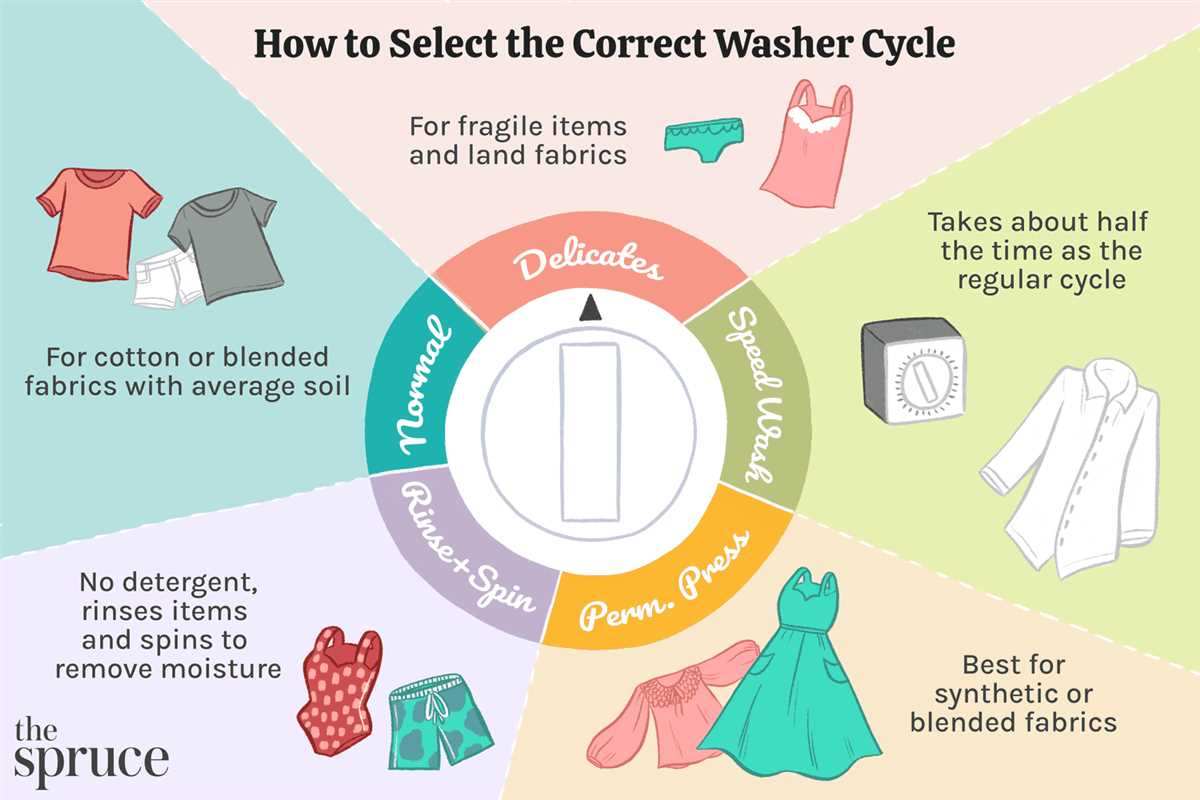
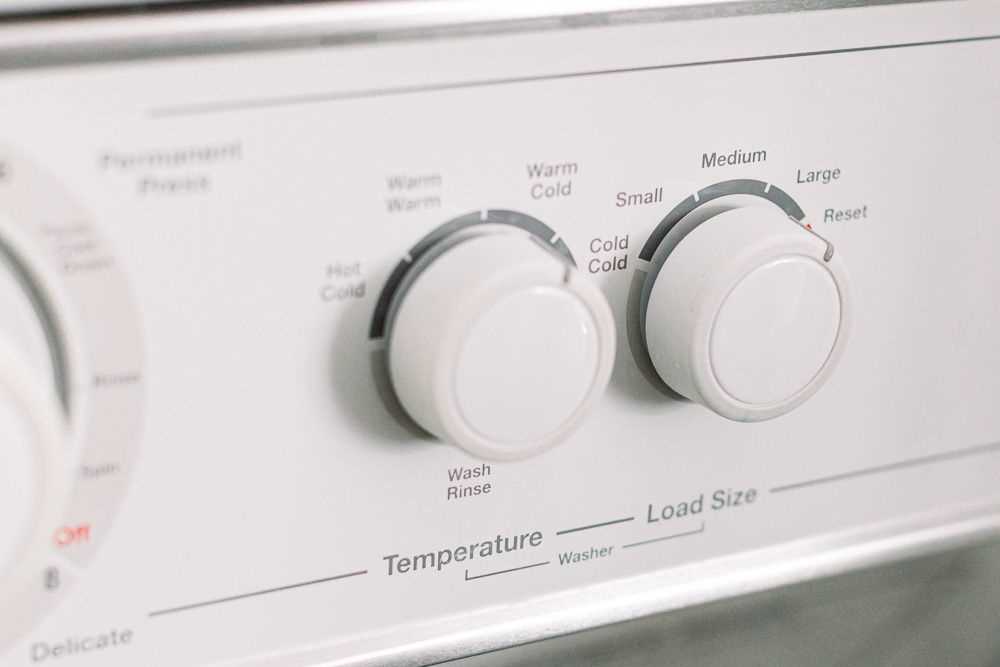
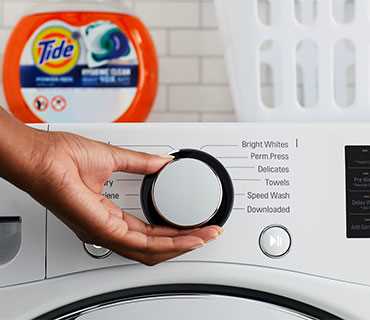
Cold water is best for delicate fabrics that may shrink or fade in warmer temperatures. It is also suitable for lightly soiled items or colors that may bleed. Cold water is more energy-efficient than hot water, so it can be a good option for saving energy and reducing utility bills.
Combination Temperature
Some washing machines offer a combination temperature setting, which allows you to wash your laundry with mixed water temperatures. This setting is useful when you have a mixture of fabrics and dirt levels. For example, you can use hot water for heavily soiled items and cold water for more delicate fabrics in the same load.
Tip: Use Cold Water for Rinsing
Regardless of the main wash temperature, using cold water for the final rinse can help preserve fabric integrity and prevent color bleeding. It is especially important for dark-colored and black garments to maintain their vibrancy.
Conclusion
Choosing the right temperature for your washing machine can significantly impact the cleanliness and longevity of your laundry. It’s essential to consider the fabric type, level of soiling, and any care instructions before selecting the temperature. Experiment with different settings to find the best temperature for your specific needs and enjoy fresh, clean clothes with every wash.
The Importance of Choosing the Right Washing Machine Setting
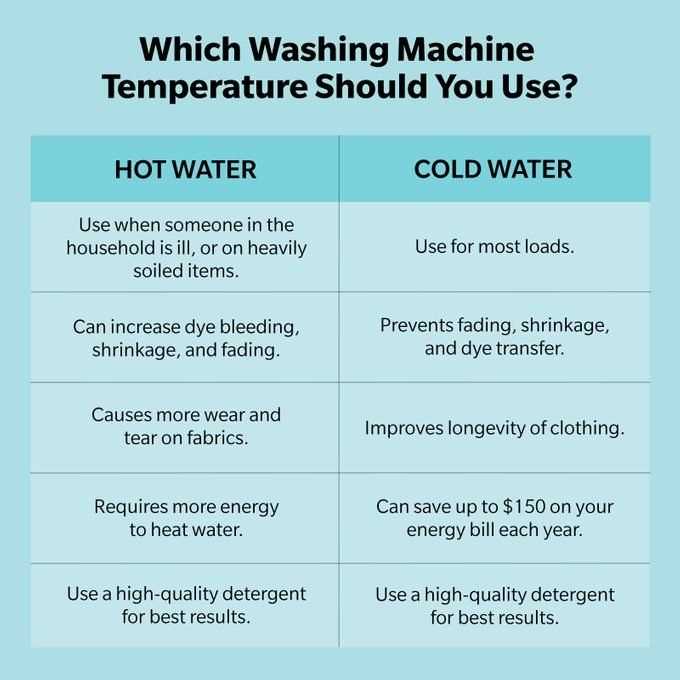
When it comes to doing laundry, using the right washing machine setting is key to ensuring clean, fresh-smelling clothes. Different fabrics and stains require different water temperatures and agitation levels to be effectively cleaned. Here are a few reasons why choosing the right washing machine setting is important:
1. Fabric Care
One of the most important reasons to choose the right washing machine setting is to avoid damaging your clothes. Delicate fabrics, such as silk or wool, require gentle washing cycles with lower temperatures to prevent shrinkage, color fading, or stretching. On the other hand, heavily soiled clothes made of durable fabrics like cotton or denim may need a higher temperature setting for effective stain removal.
2. Stain Removal
Choosing the right washing machine setting is crucial for stain removal. Different types of stains, such as oil, grass, or blood, respond better to specific temperatures. Hot water is typically more effective at removing oil-based stains, while cold water is better for grass or blood stains. Many washing machines also offer pre-programmed stain removal settings, which can make the process even easier.
3. Energy Efficiency
By selecting the appropriate washing machine setting, you can also improve energy efficiency. Using hot water for every load can significantly increase your energy consumption, as heating water requires energy. However, for lightly soiled clothes, a cold water setting can be just as effective while reducing your energy usage. Consult your washing machine’s user manual or look for the Energy Star label to find the most energy-efficient settings.
4. Environmental Impact
Choosing the right washing machine setting can also reduce your environmental impact. Similar to energy consumption, using excessive amounts of water can strain local water resources. Opting for shorter wash cycles or using eco-friendly settings can help conserve water and reduce the environmental footprint of your laundry routine.
5. Washing Machine Lifespan
Finally, selecting the appropriate washing machine setting can prolong the lifespan of your appliance. Constantly using high-temperature settings or selecting the wrong cycle for the fabric can put unnecessary stress on the machine’s components, leading to premature wear and tear. By using the right settings, you can ensure that your washing machine operates optimally and lasts longer.
In conclusion, choosing the right washing machine setting is essential for fabric care, stain removal, energy efficiency, environmental impact, and the machine’s lifespan. Understanding the different settings available and selecting the appropriate one for each load can help you achieve the best cleaning results while maintaining the longevity of your washing machine.
How Temperature Can Impact the Cleaning Process
When it comes to washing clothes, the temperature of the water can significantly impact the cleaning process. Different temperatures can have different effects on the effectiveness of cleaning, the removal of stains, and the longevity of fabrics. Here’s how temperature can make a difference:
Hot Water
Using hot water in your washing machine can help to kill bacteria and germs on your clothes. This is especially important for items that are heavily soiled or stained, as hot water can help to break down dirt and grime more effectively. Hot water is also more efficient in removing oil-based stains, such as grease or oil.
However, hot water can cause certain fabrics to shrink, fade, or become damaged over time. It’s important to check the care label of your clothes to ensure they can be washed in hot water. Delicate fabrics, like silk or wool, should typically be washed in cooler temperatures.
Warm Water
Warm water is a good compromise between hot and cold water. It is effective in removing most common stains and dirt, while also being gentle enough on most fabrics. Warm water is particularly effective for synthetic fabrics like polyester or nylon, as it helps to prevent static cling and better cleans the fibers.
Using warm water can also minimize the risk of shrinking or fading your clothes, making it a safe option for everyday washing. It is also energy-efficient compared to hot water, as you don’t need to heat as much water.
Cold Water
Cold water is suitable for delicate fabrics, bright colors that tend to bleed, and lightly soiled clothing. While it may not be as effective in removing tough stains or killing bacteria, cold water can help to preserve the quality and longevity of certain fabrics.
Using cold water also saves energy, as you don’t need to heat the water. This can be especially beneficial for environmentally conscious individuals or those looking to reduce their energy costs.
Conclusion
Choosing the right water temperature for your washing machine can make a big difference in the cleanliness and longevity of your clothes. Hot water is best for heavy stains and heavily soiled items, while warm water is a good compromise for most everyday washing. Cold water is suitable for delicate fabrics and lightly soiled clothing, while also being energy-efficient. Remember to always follow the care instructions on your clothes to avoid damaging them during the cleaning process.
Understanding the Hottest Setting on a Washing Machine
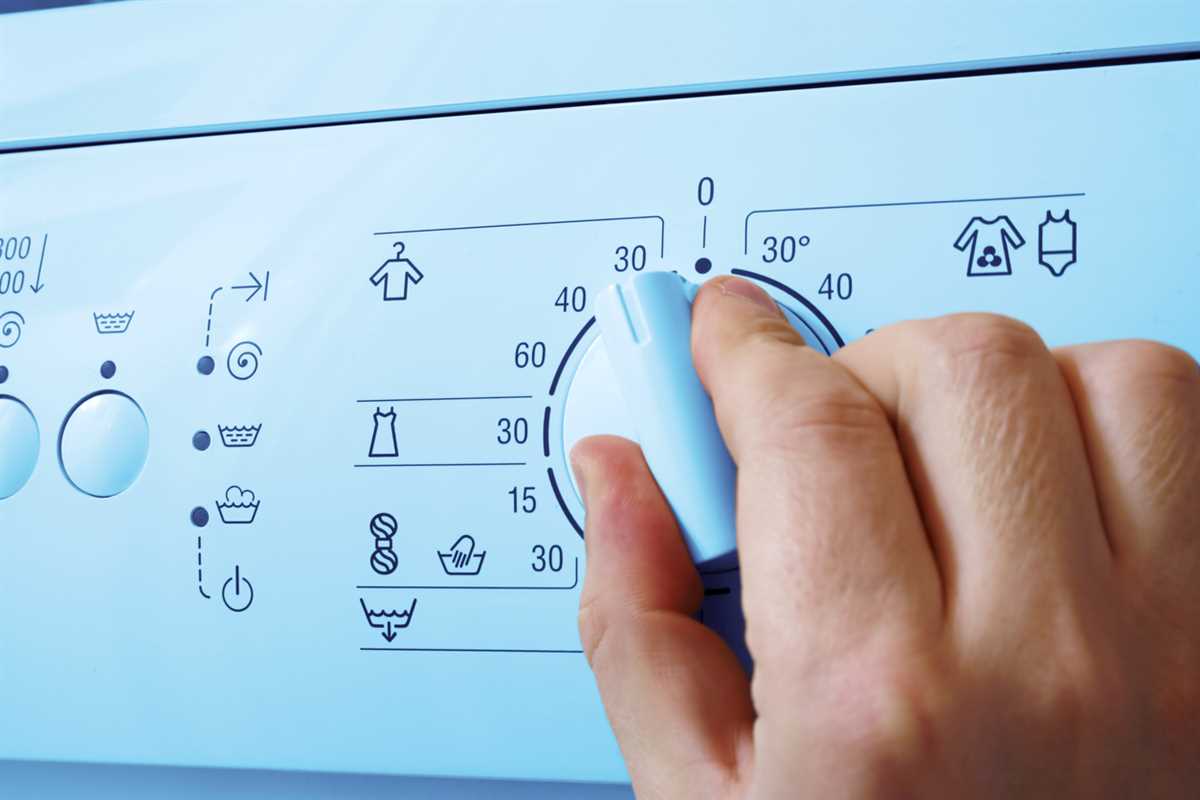
When it comes to doing laundry, the temperature at which you wash your clothes can have a significant impact on the cleanliness and longevity of your garments. Many modern washing machines come with various temperature settings, including a “hottest” or “hot” setting. Understanding how this setting works and when to use it can help you achieve the best cleaning results.
Why is the hottest setting important?
The hottest setting on a washing machine typically uses water at temperatures around 60-90 degrees Celsius (140-194 degrees Fahrenheit). This high temperature can effectively kill bacteria, remove tough stains, and sanitize your garments. It is especially useful for washing heavily soiled items, whites, or bed linens that require thorough cleaning.
When to use the hottest setting?
Here are some situations where using the hottest setting on your washing machine is recommended:
- Cleaning heavily soiled clothes: If your clothes are stained or heavily soiled, using the hottest setting can help break down dirt, grime, and oil, ensuring a thorough clean.
- Washing white garments: The hottest setting can be beneficial for washing white clothes, as it helps remove yellowing and keeps them looking bright.
- Sanitize bedding and towels: Bedding and towels can harbor bacteria, so using the hottest setting can help sanitize them and ensure they are free from germs.
Things to consider before using the hottest setting
While the hottest setting can be effective for certain situations, there are a few factors to consider:
- Fabric type: Some fabrics, such as delicate materials or those prone to shrinkage, may not be suitable for the hottest setting. Always check the care label before using the hottest temperature.
- Energy consumption: Washing machines consume more energy when using higher temperatures. If you’re looking to save on energy bills or have clothes that don’t require intense cleaning, using a cooler setting may be more appropriate.
- Pre-treating stains: For stubborn stains, pre-treating them with a stain remover before washing can improve the chances of complete removal, even if you’re using a cooler temperature setting.
In conclusion
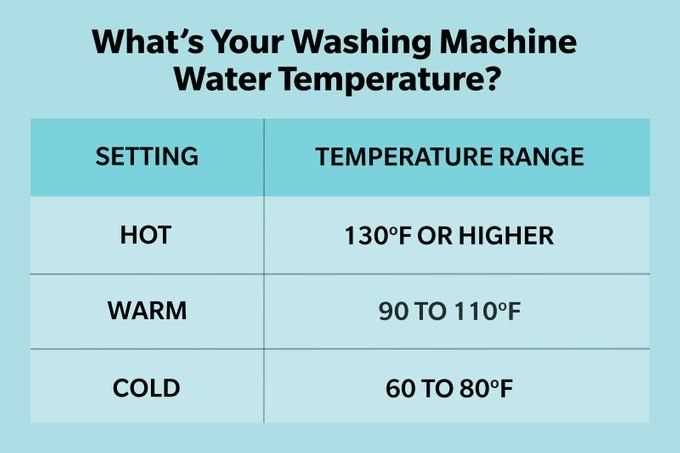
The hottest setting on a washing machine can be a powerful tool for getting your clothes clean and sanitized. Understanding when and how to use this setting can help you achieve the best results while taking into account fabric type and energy consumption. For heavily soiled items, whites, and germ-prone fabrics, the hottest setting can provide the extra cleaning power needed for effective laundering.
Exploring the Various Temperature Options
When it comes to washing clothes, selecting the right temperature can make a big difference in how effectively they are cleaned. Today’s washing machines offer a range of temperature options, each serving a specific purpose. Let’s explore the various temperature options and how they affect the cleaning process.
Hot Water
Hot water is typically used for heavily soiled clothing, towels, bedding, and whites. It is the most effective temperature for removing grease, oil, and tough stains. The high temperature helps to dissolve detergents and kill bacteria and other germs. However, it is important to note that hot water can cause colors to fade or bleed, so it should be used with caution for colored or delicate fabrics.
Warm Water
Warm water is the go-to setting for most everyday laundry. It is suitable for a wide range of fabrics, including most colored items and moderately soiled clothing. The warm temperature helps to activate the enzymes in detergents, providing a good balance between cleaning power and color protection. Most washing machine manufacturers recommend using warm water for everyday laundry.
Cold Water
Cold water is a great option for delicate fabrics, dark colors, and lightly soiled items. It is also an environmentally friendly choice, as it consumes less energy than hot or warm water. Cold water may not be as effective in removing tough stains or killing bacteria, but it helps prevent colors from fading or bleeding. For heavily soiled clothes, pre-treating or using a stain remover before washing in cold water may be necessary.
Choosing the Right Temperature
To choose the right temperature for your laundry, consider the fabric type, color, and level of dirtiness. Follow the care labels on your clothing, which often provide temperature recommendations. Sort your laundry according to these guidelines to prevent damage and achieve optimal cleaning results.
| Temperature | Suitable For |
|---|---|
| Hot | Heavily soiled items, whites, bedding |
| Warm | Everyday laundry, colored items |
| Cold | Delicate fabrics, dark colors, lightly soiled items |
Remember, it’s not just about the temperature, but also about the quality of the detergent and the overall washing machine performance. Adjusting the temperature according to your laundry needs will ensure your clothes are clean and well-maintained for longer.
The Benefits of Using High Temperature Settings
Using high temperature settings on your washing machine can provide several benefits. Here are some of the main advantages of washing your clothes with hot water:
- Kills germs and bacteria: Hot water is effective in killing germs and bacteria that may be present on your clothes. This is particularly important for items like underwear, towels, and sheets that come into contact with your body.
- Removes tough stains: Hot water works more effectively in breaking down and removing tough stains like grease, oil, and blood. It helps to loosen the particles, making it easier for the detergent to penetrate and lift the stains.
- Sanitizes bedding and towels: Bedding and towels collect dead skin cells, oils, and other dirt over time. Washing them with hot water helps sanitize them, ensuring that they’re clean and fresh for your use.
- Great for whites and linens: Hot water is ideal for washing white clothes and linens. It helps to keep them bright and prevents them from turning yellow over time.
- Effective for heavy-duty items: Items like blankets, quilts, and heavy winter coats benefit from high temperature settings as it helps remove dirt and debris that may have accumulated in the fibers.
- Reduces allergens: Hot water is effective in reducing allergens like dust mites and pet dander, making it especially beneficial for individuals with allergies or sensitivities.
While using high temperature settings can be beneficial, it’s important to note that not all fabrics and garments can withstand hot water. Always check the care label of your clothing items to ensure they can handle hot water washing temperatures.
FAQ
What is the hottest setting on a washing machine?
The hottest setting on a washing machine is typically labeled as “Hot” or “Sanitize”.
What temperature is the hottest setting on a washing machine?
The hottest setting on a washing machine can reach temperatures up to 60 degrees Celsius (140 degrees Fahrenheit).
Why would I need to use the hottest setting on a washing machine?
Using the hottest setting on a washing machine is necessary for effectively cleaning heavily soiled or stained items, killing germs and bacteria, and sanitizing certain items like bedding or towels.
Can I use the hottest setting on a washing machine for all types of fabric?
No, the hottest setting should only be used for sturdy fabrics like cotton or linen. Delicate fabrics like silk or wool should be washed with colder water to prevent damage.
Are there any downsides to using the hottest setting on a washing machine?
Using the hottest setting on a washing machine can cause shrinkage or fading of certain fabrics, so it’s important to read the care labels on your clothes before selecting the temperature.
What is the hottest setting on a washing machine?
The hottest setting on most washing machines is typically “Cotton” or “Heavy Duty.”
Does the hottest setting clean clothes better?
Yes, the hottest setting can help remove tough stains and kill bacteria more effectively.













